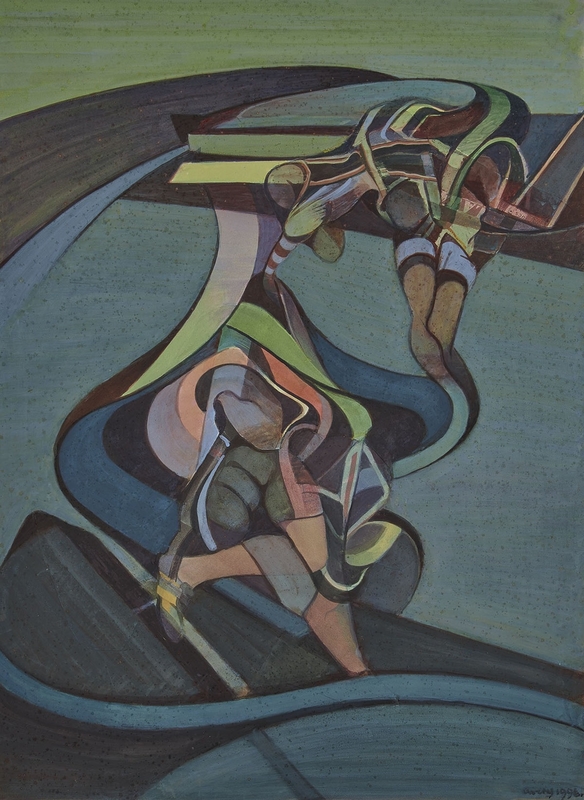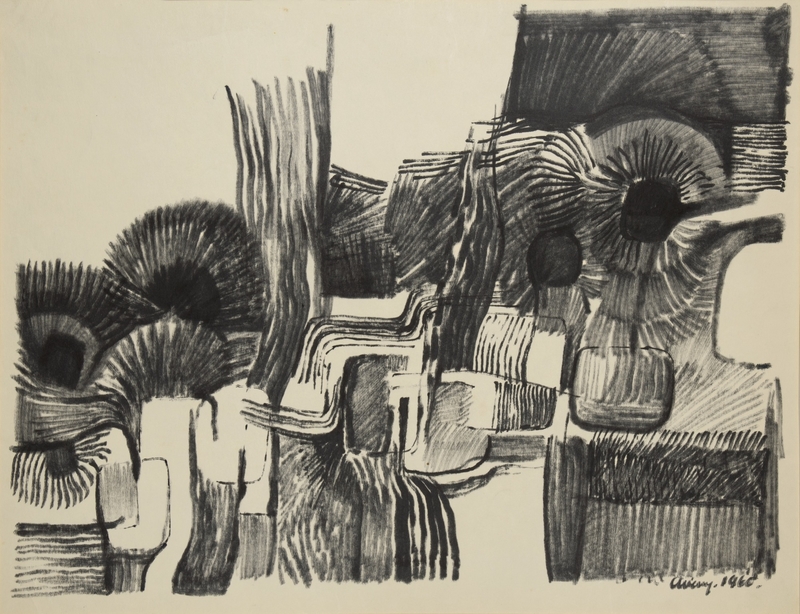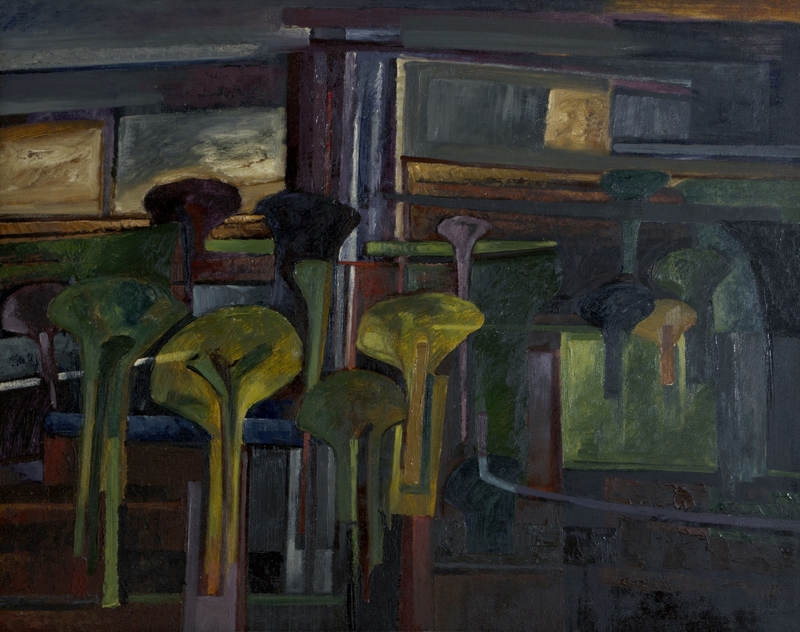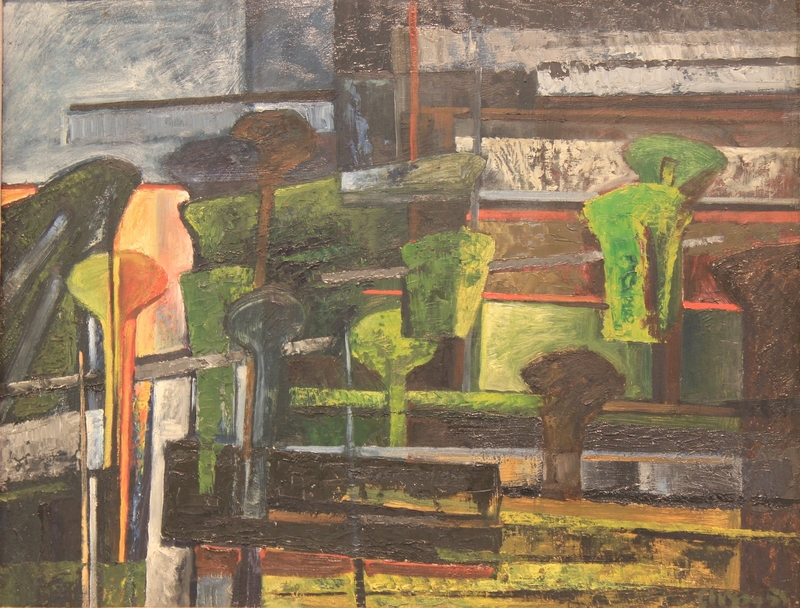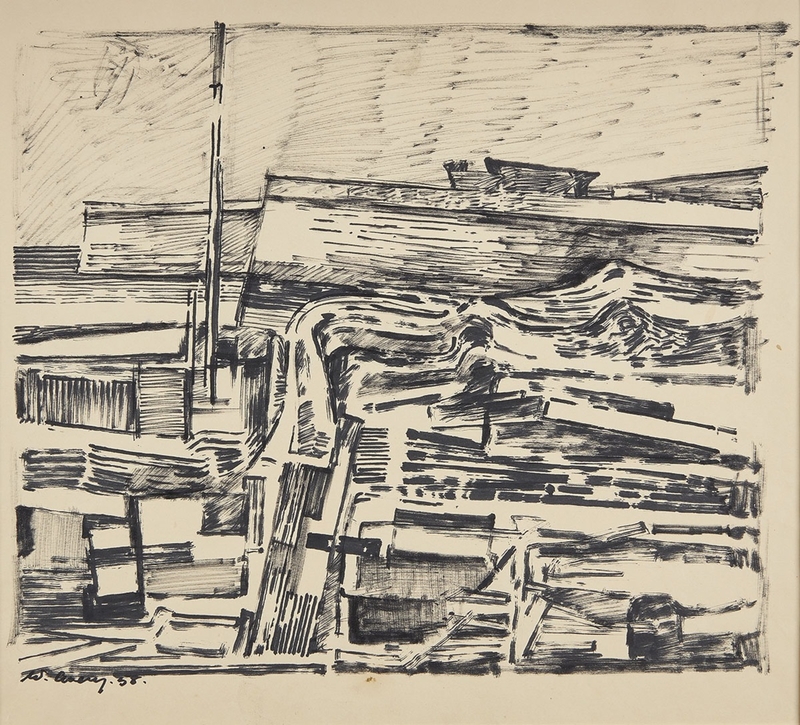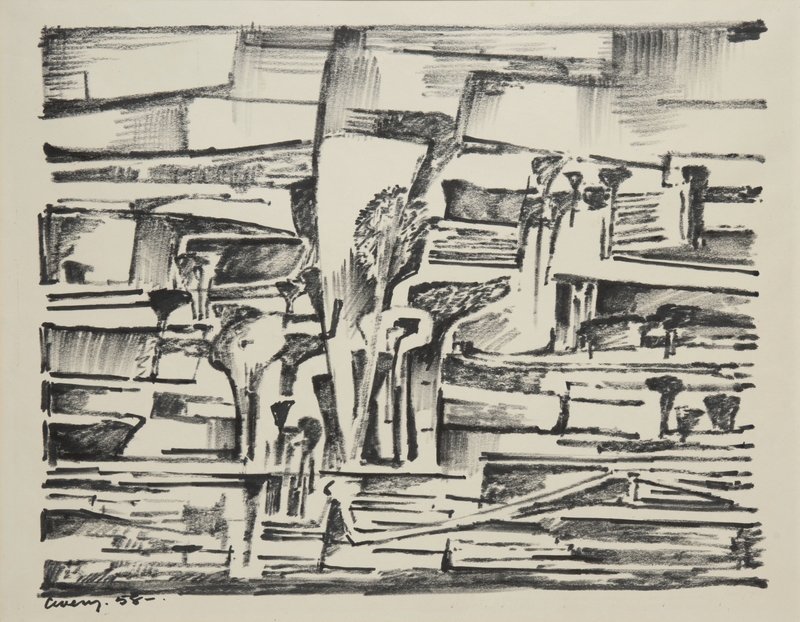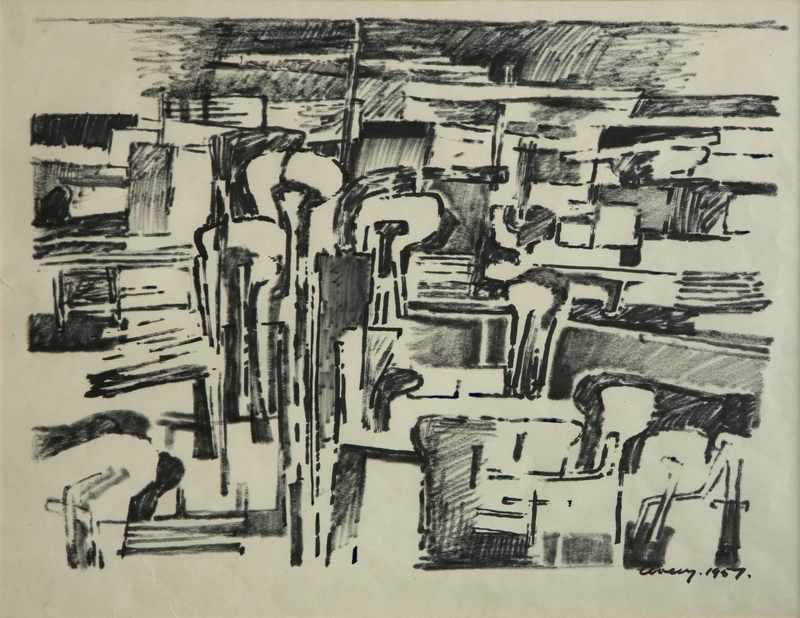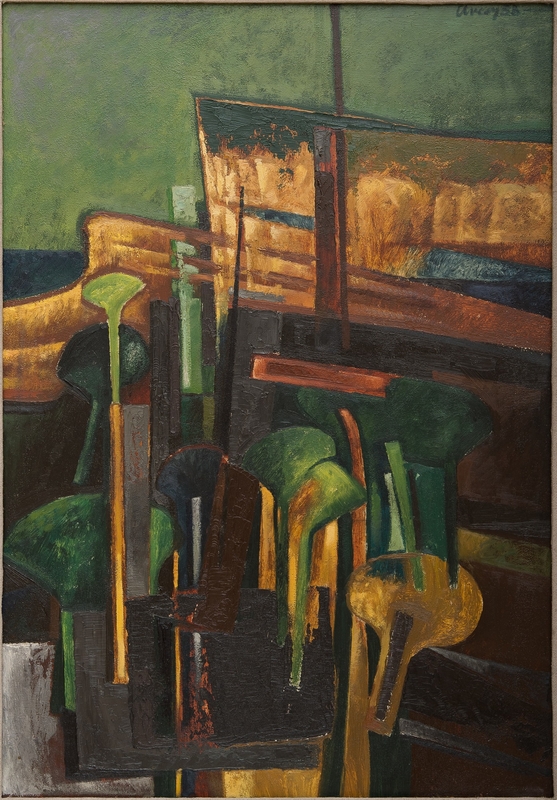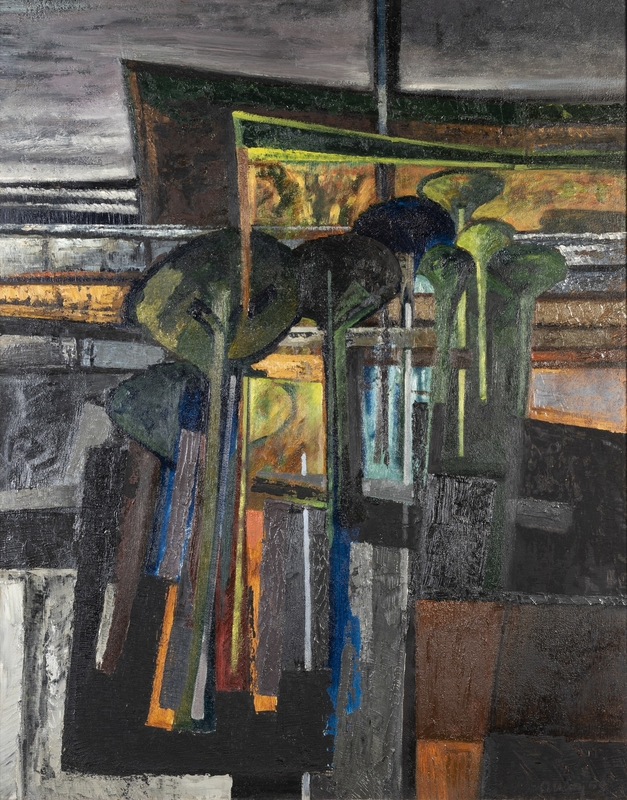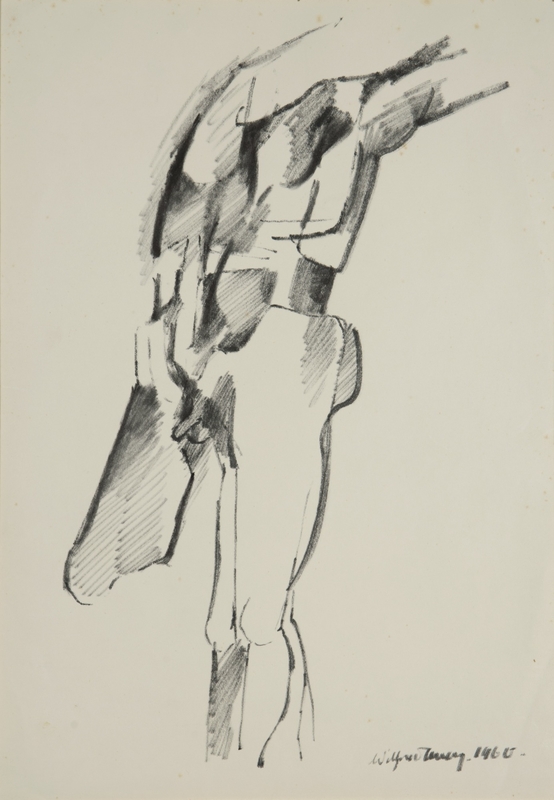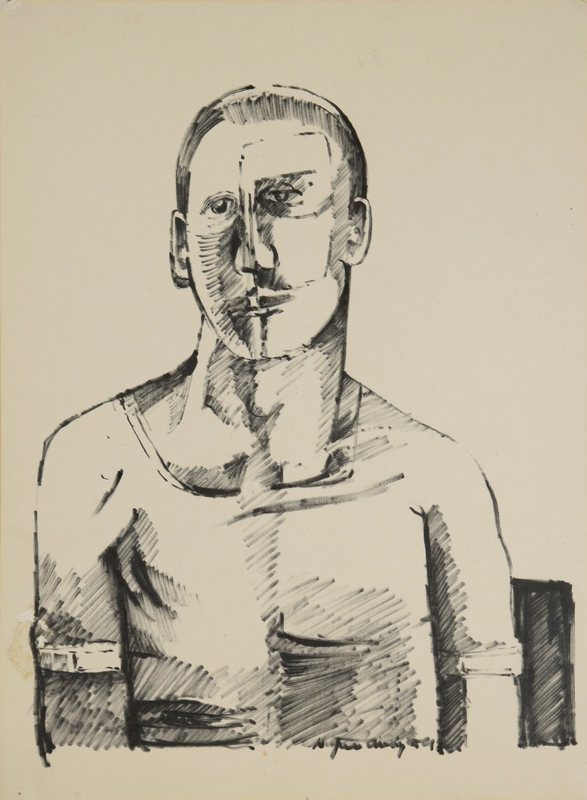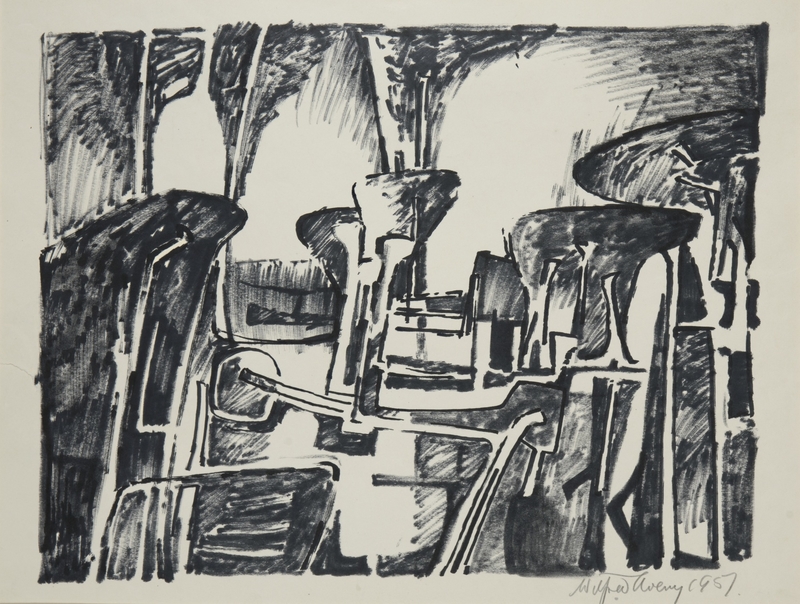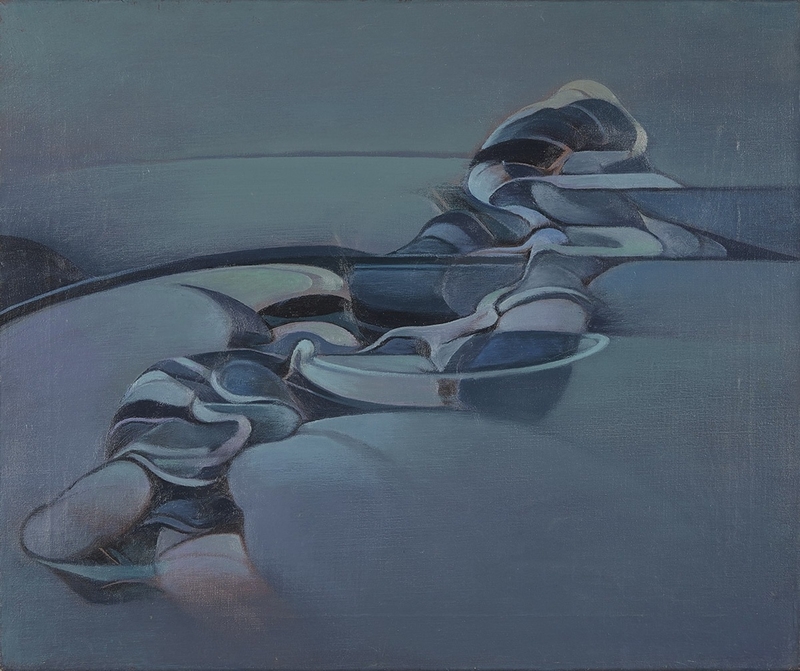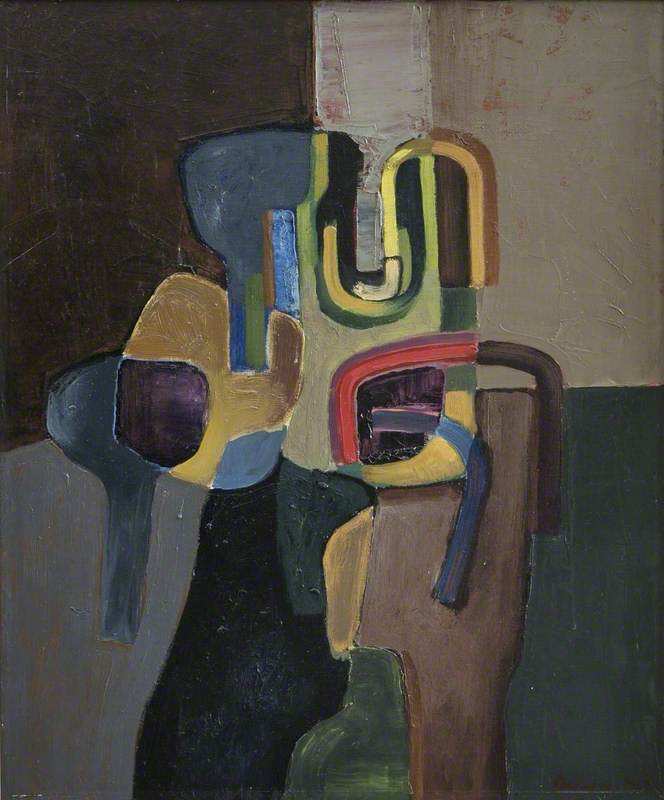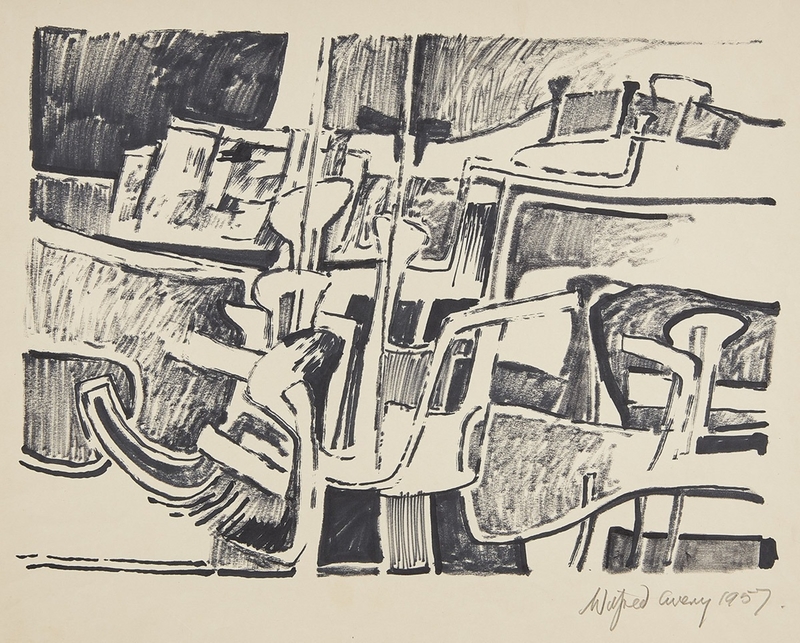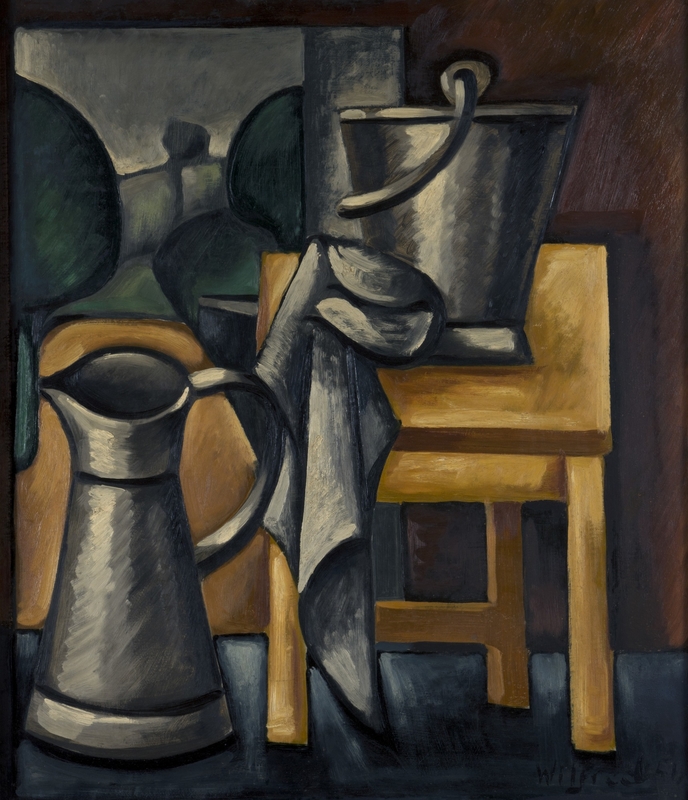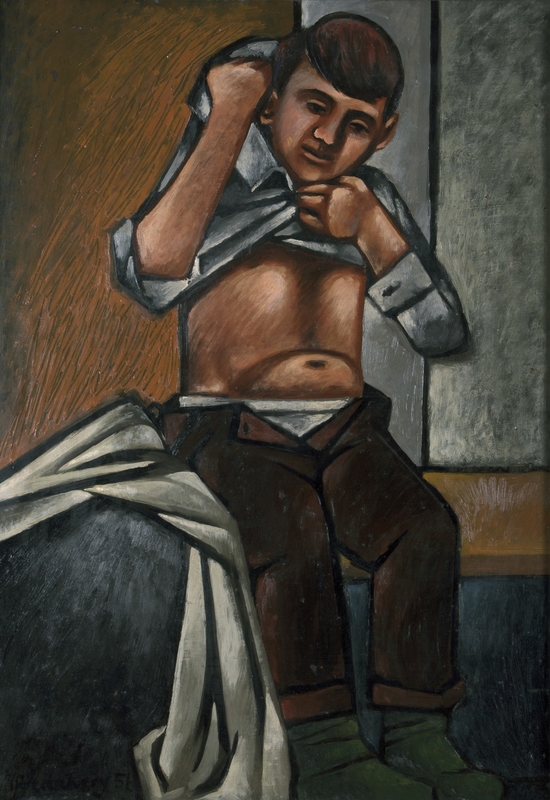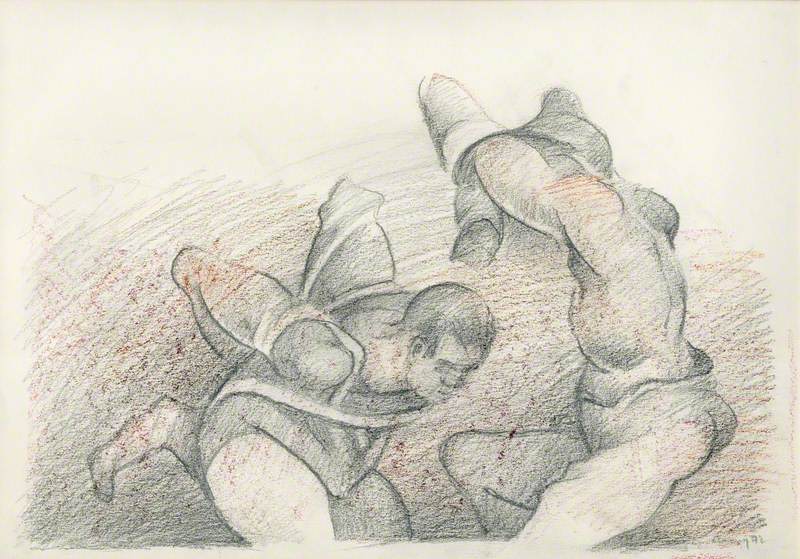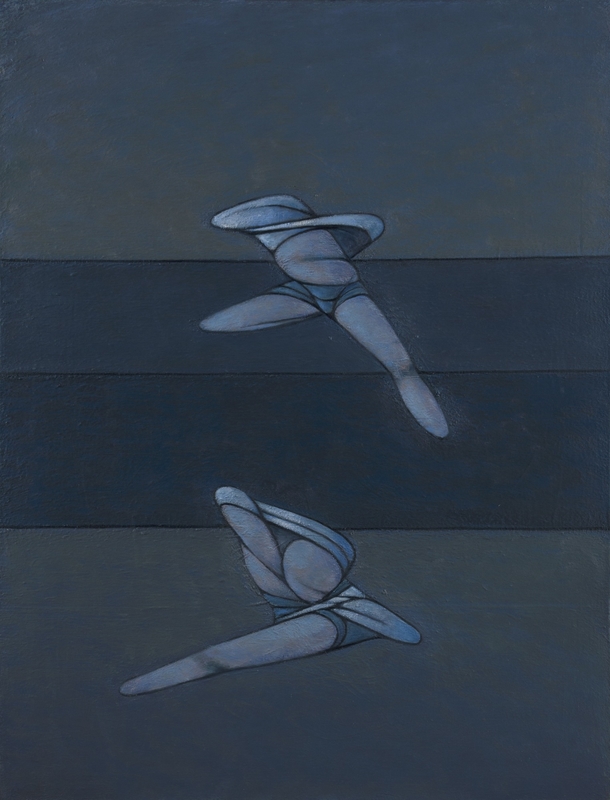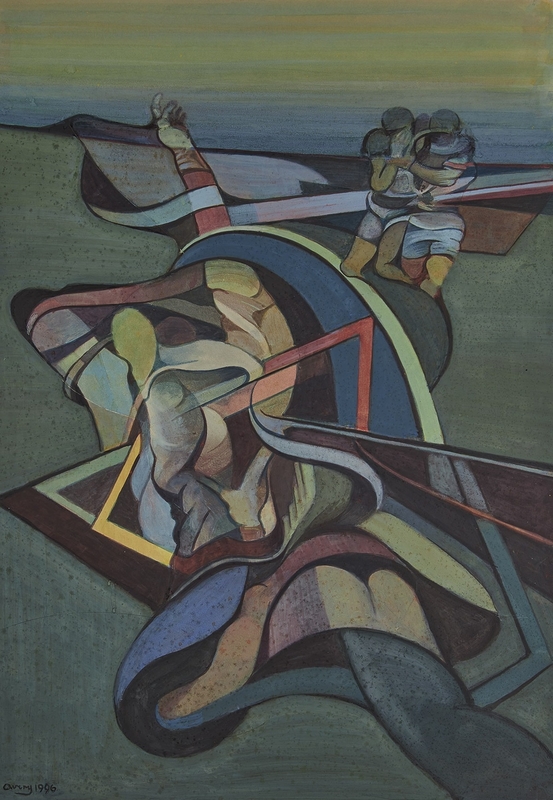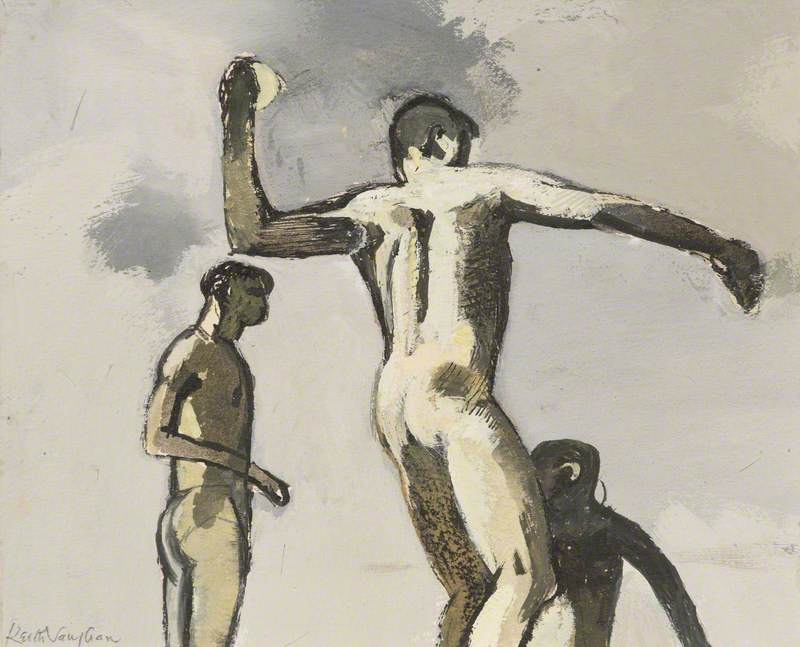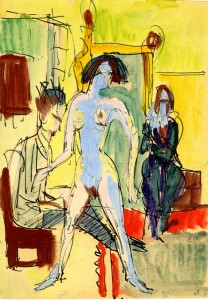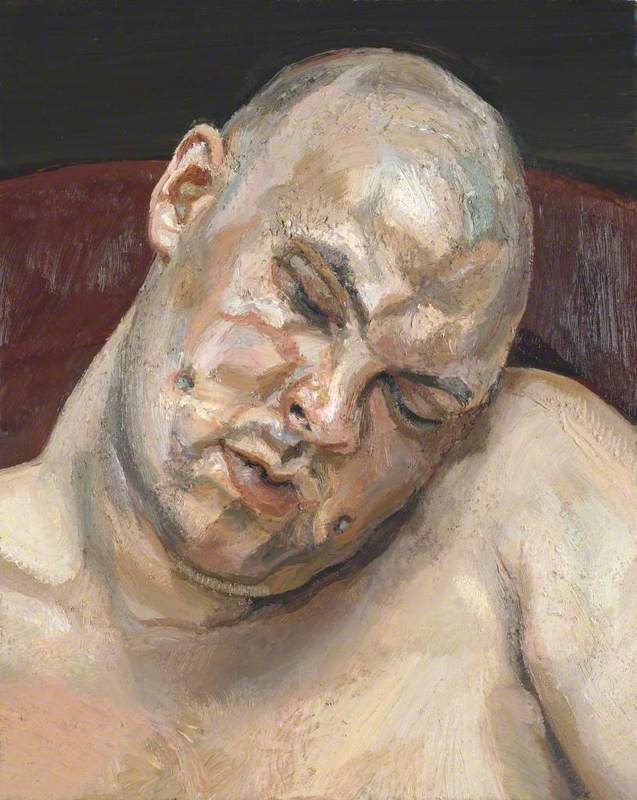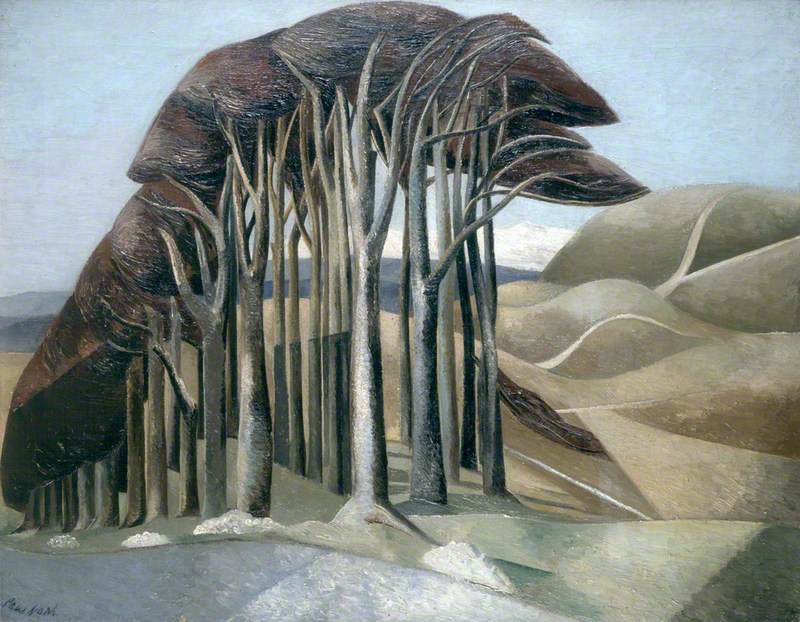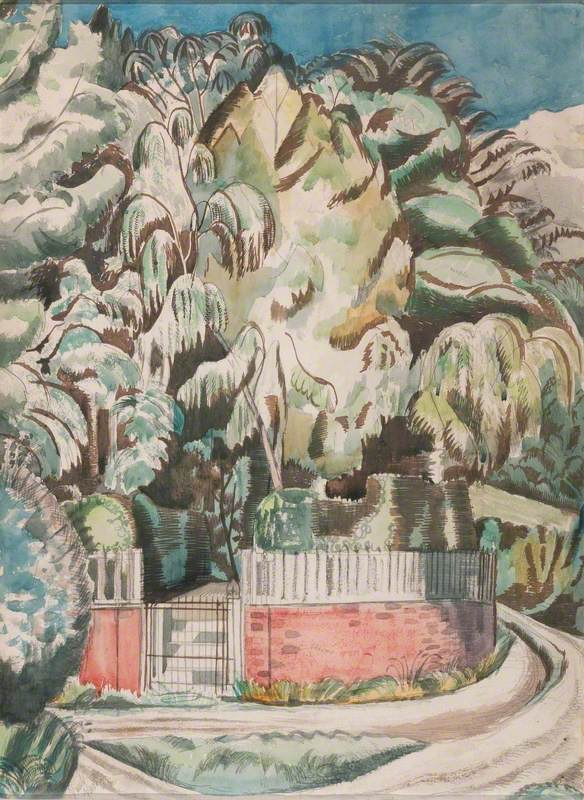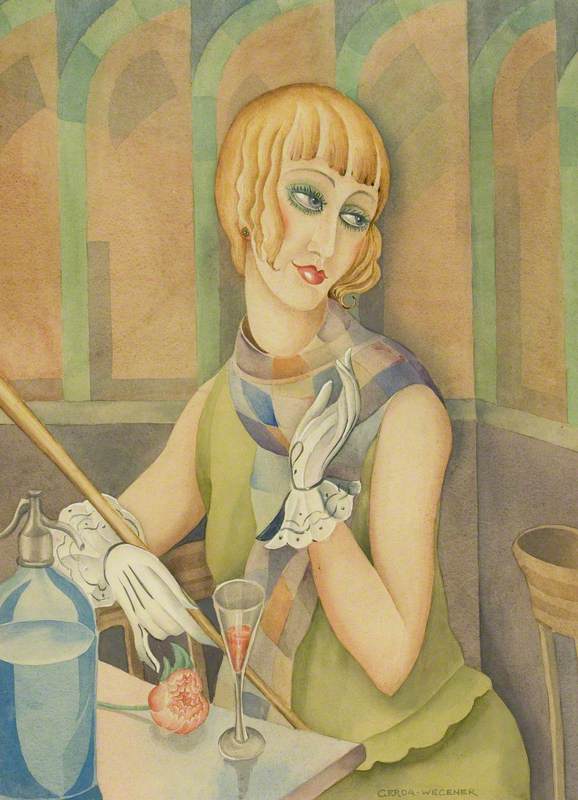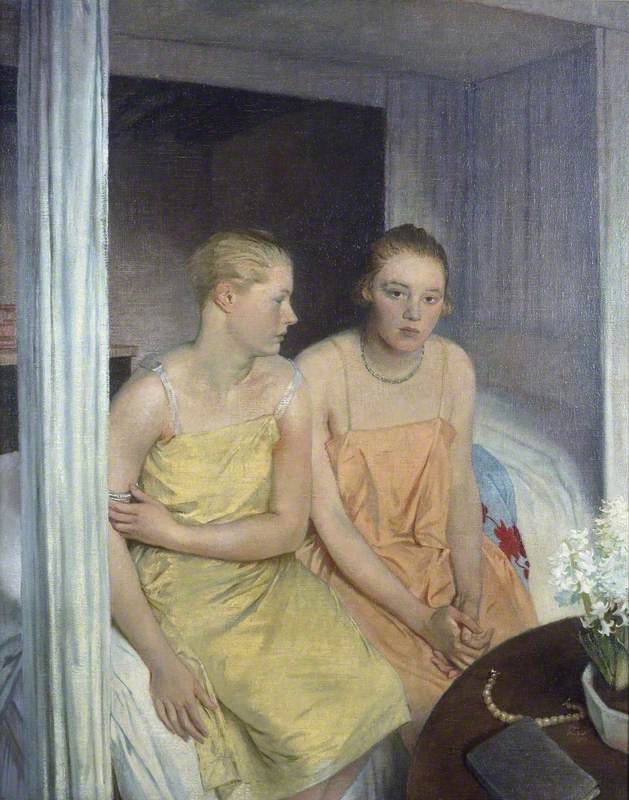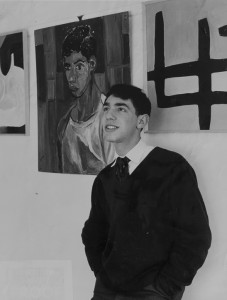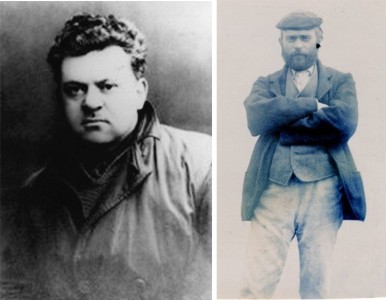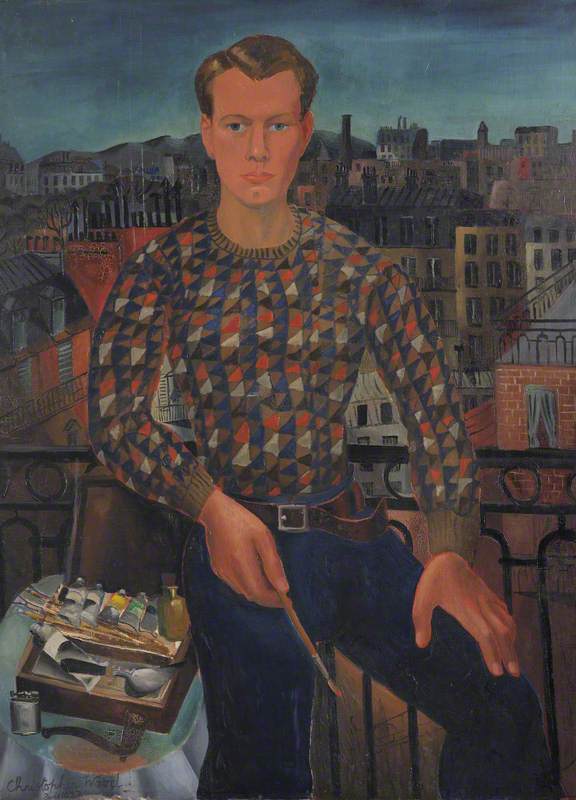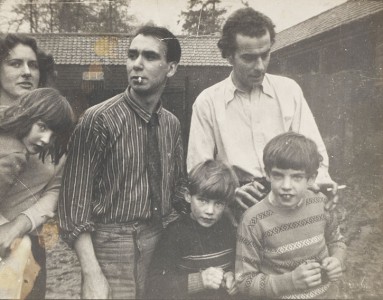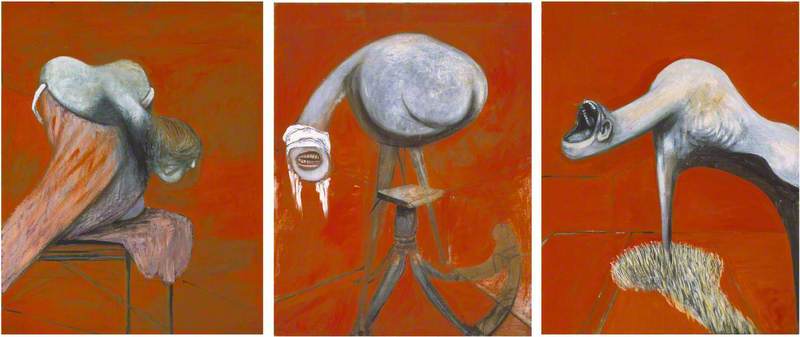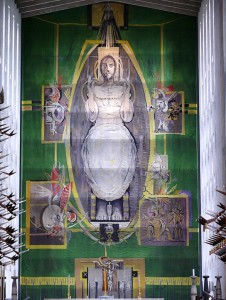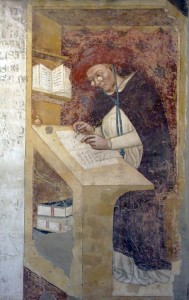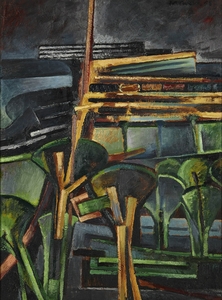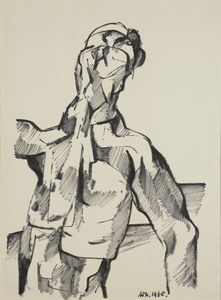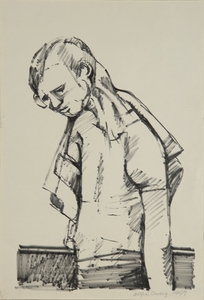'What one wanted more than anything else to do was to arrive at the image beneath all the others; to have been so involved in one's work that one was no longer conscious of its destiny: to work so that the final form and shape could not have been imagined or predicted. Strangely enough, however, the final work seemed oddly familiar. One had glimpsed mysteriously the sense of the 'whole' in which we are all involved.' – Wilfred Avery
Wilfred Avery (1926–2016) only really tackled two subjects in his career: landscape and the male body. His work developed from an interest in Jungian psychoanalysis and an exploration (and acceptance) of his own sexuality. By the end of his life – one led with a rare and intense creative focus – he had unified these two chosen subjects into one compelling whole.
Double Figure
1979, painting by Wilfred Avery (1926–2016) 
But the self-taught painter and collagist was largely unrecognised in his lifetime. Without the networking opportunities that art school provides, he remained somewhat distanced from the art world at large. This was exacerbated by the close relationship he had with his twin brother, the painter and later novelist Samuel Lock. Living together until the age of 32, the pair remained a self-sufficient unit throughout their life. In this self-imposed isolation from his creative peers, Wilfred's style evolved outside of any popular movement, and he struggled to find a home within London's commercial art scene.
Wilfred and Sam were born in the small town of South Molton, Devon in 1926. Aged 17, and with art school never having been considered an option, the pair moved to Cheltenham to take up teacher training. Wilfred's developing interest in modern art was reinforced by a meeting with Paul Nash, who encouraged him to look to France rather than America for inspiration. Though brief, this conversation would come to shape his entire career, instilling not only a deep appreciation for the work of Cezanne, Picasso and Braque, but a lifelong animosity towards American Abstract Expressionism. Much later in 1963 (and with Nash's advice still in mind), Avery would spend a year in France, painting in the Paris ateliers and attending classes taught by Braque and Giacometti.
In 1952, the twins moved to London. A year later, Wilfred exhibited in Helen Lessore's Beaux Arts Gallery in her show 'Ten Young Artists'. For a brief period, his work fitting right within its aesthetic, he was associated with the commercially popular but short-lived Kitchen Sink School. Resistant to categorisation, however, and certainly dismissive of this interpretation of his work (all drab colours and heteronormative domesticity), he moved over to Victor Musgrave's Gallery One, exhibiting with Sam in both 1954 and 1956.
Wilfred Avery (1926–2016) and Samuel Lock 'Samuel Avery' (1926–2016)
1956
Ida Kar (1908–1974) 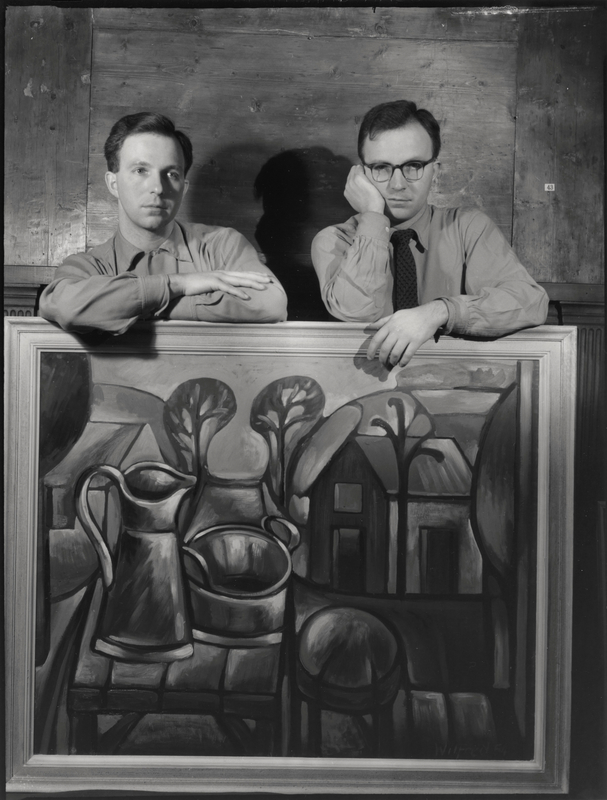
But, as ever, the art world continued to mutate. By the end of the 1950s, Gallery One had moved away from painting and towards avant-garde sculpture and performance. Within just a decade, Wilfred could no longer find a home for his work.
Over this period, Wilfred continued to draw and paint the snug landscapes of his youth. These paintings were close, Cubist-inspired and glowing scenes: hills and trees jostling for space within the frame. 'My sense of place does not lie here.' He wrote, from London. 'My place is the hills and the valley turning into the sea, the sea running into the land, the rocks running under the sea and running onto the curve of the horizon.'
This quasi-religious attitude to landscape brought with it an early influence of visionaries like William Blake, Stanley Spencer and George Rouault. Though his work soon moved toward a Surrealist bent, Wilfred's ongoing practice was imbued with a generalised spirituality, one which would morph into a fixation with the works of Carl Jung.
His flat-plane still lifes, painted in the same period, bear a similar sense of claustrophobia. Frying pans, glass bottles, a saucepan and spatula; domestic compositions set out atop rumpled white tablecloths in a thick and muted palette.
It is his figure studies that remain of particular importance. Wilfred's quiet undressing of young men provides an intimate window into queer domestic life – one that differs from the visceral animalism of his contemporary Francis Bacon, or the flat-pack nudes of Keith Vaughan. However, Wilfred's male bodies (and indeed, his still lifes) allow us a kind of domestic voyeurism that makes his practice just as radical as these two stalwarts of post-war British art.
Wilfred's depictions of the queer body within the domestic interior were painted at a time in which it was rarely seen (at least not openly), in the public sphere, let alone on the walls of a gallery. It is from this point that the artist's work progresses into the confident and unabashed eroticism of his maturity.
Boy Undressing
1955, painting by Wilfred Avery (1926–2016) 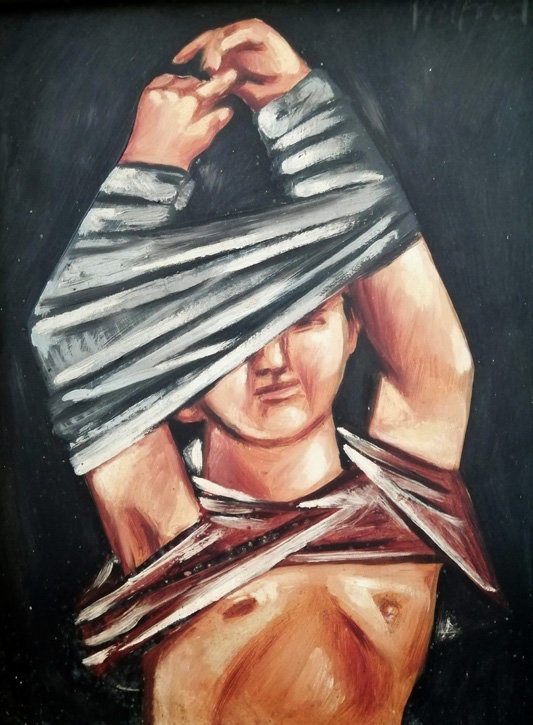
Three Figures
1979, drawing by Wilfred Avery (1926–2016) 
The theme continued in later drawings. Dynamic figures, their semi-discarded clothing like something from a Bauhaus costume party, leapt through the artist's practice.
In 1961, Wilfred met the Egyptian artist Adrien de Menasce, after his brother became romantically involved with him that same year. With Adrien in both Sam and Wilfred's lives, Wilfred's exclusive creative community was complete. It would be hard to overstate the importance of this meeting, an association that had a profound influence on the development of Wilfred's practice. Though he had flirted with psychoanalytical thought in the previous decade, it wasn't until he met Adrien – a committed Jungian – that it began to take a pivotal place in his work.
Double Space Figures
1966, collage by Wilfred Avery (1926–2016) 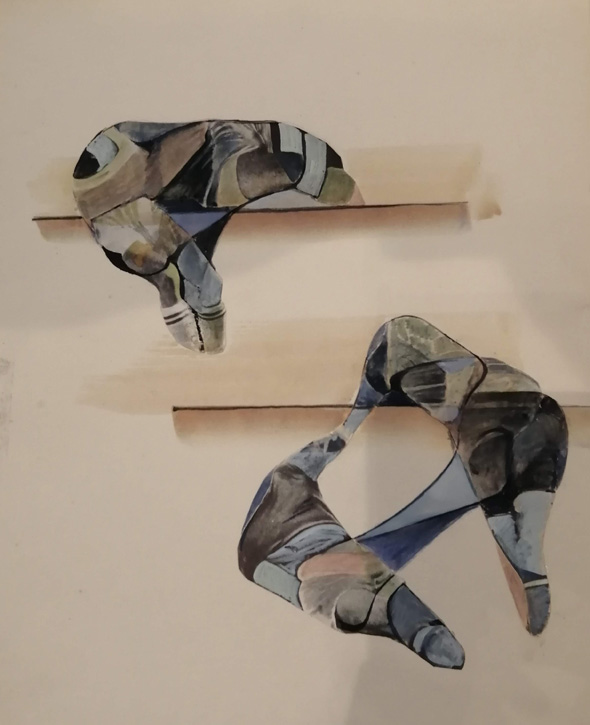
And so, in this way, Wilfred's technique became heavily led by his subconscious. He began to paint without drawing on the canvas first, beginning each work with the same small mark from which the larger image would emerge. His process became one of discovery rather than predetermination. Look at any of his work from this period on and you will see evidence of the transformations and changes in each, shapes hidden and overlaid with something new.
Later, small collage-gouaches were made using a similar method. In order to dissociate himself from the magazine images he was using, Wilfred began each work upside-down, cutting up the limbs and torsos of athletes and footballers and reapplying them in unnatural arrangements before adding thin layers of gouache.
Aria-Finale; Galaxy; Criss-Cross
1997, paintings by Wilfred Avery (1926–2016) 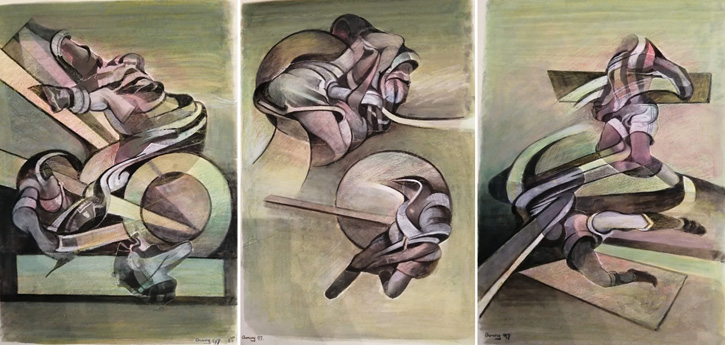
Talisman
1964–1969, painting by Wilfred Avery (1926–2016) 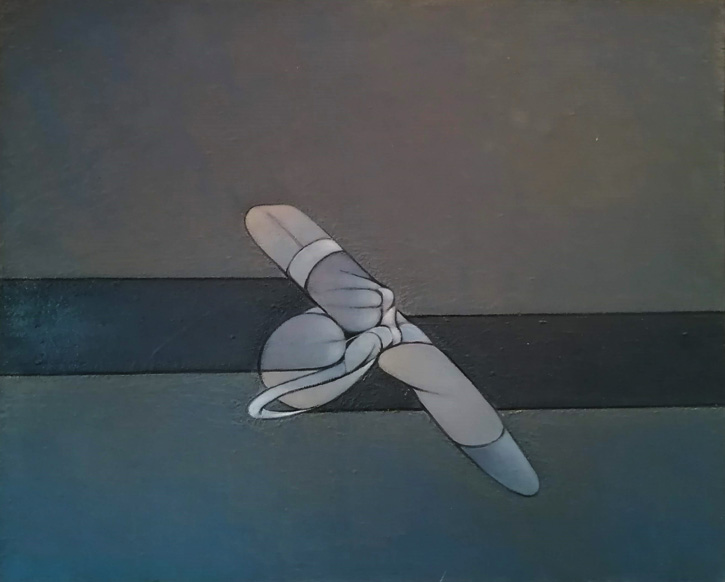
Wilfred's Sixties Figures were painted between 1964 and 1969. These 20 works, all of varying sizes and all in the same foggy hues of blue and violet, without doubt encapsulate the climax of the artist's experimentation with the body. Although Wilfred always referred to the paintings in this series as figures, they hardly are in any obvious or traditional sense.
Instead, we find strange and strangulated limbs reminiscent of Hans Bellmer's La poupée – shibari-bound shapes that balance themselves disconcertingly between the human form and something totally other. These are unsettling, psychological and sexualised works. Each male body (and they are, without question, male) is imbued with a great energy.
Wilfred met Ray Crossley in 1966, the partner he would stay with for the rest of his life. Being in a committed relationship gave the artist a newfound confidence in his sexuality, something that directly translated into this series. Gone are the quietly avoidant figures undressing, hidden away in their darkened rooms. Here instead we find the figure splay-legged, its sexuality centralised and unavoidable.
There is an awareness or, more to the point, a learned knowledge, of the naked form. We should not make light of the practicality of having a nude and willing body in such close contact. Though Wilfred never used Ray as a life model in any formal sense, familiarity with another undoubtedly had a marked effect on the artist's more figurative work. Wilfred's Sixties Figures have never been exhibited as a complete series.
Trinity
1974–1975, painting by Wilfred Avery (1926–2016) 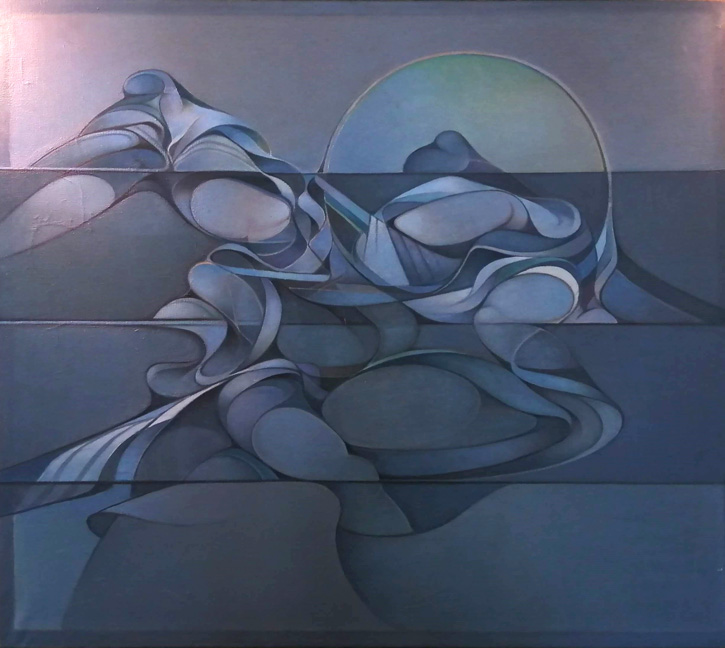
The bodies in this series – so reminiscent of his earlier collages – make an appearance in later work. Fed up with the London art world, Wilfred and Ray moved out of the city and to the countryside of the artist's childhood. Relocating back to Devon, first to Ashburton and then Budleigh Salterton, reignited Wilfred's interest in landscape. This time, however, he began to entwine his figures into the land. His organic and shifting fusions pulsate with life and energy; erotic configurations land-locked in passionate embraces.
Pavilion; Promenade
1996, paintings by Wilfred Avery (1926–2016) 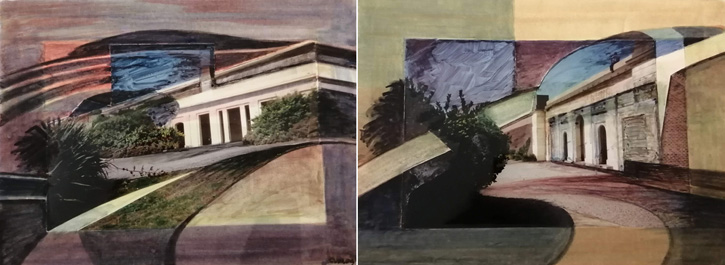
A move to Sussex in 1995 (Brighton, and later Eastbourne), brought with it a luminescent quality in his work, and a continued play with collage saw Wilfred Avery begin to incorporate his own photographs.
Wilfred died in Eastbourne on 26th April 2016. His work is now garnering long-awaited and well-deserved interest by public institutions and private collectors alike. It can be found in institutions including Museums Sheffield, RAMM Exeter, The Hepworth Wakefield and Towner Eastbourne. A retrospective at the Museum of Barnstaple and North Devon is planned for 2023.
Francesca Ramsay, art historian
